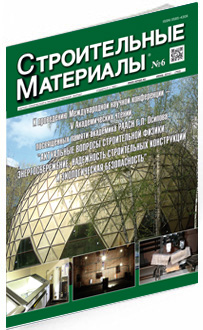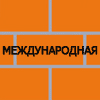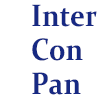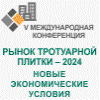Stroitel`nye Materialy №6

June, 2013
Table of contents
V.N. YARMAKOVSKY, Candidate of Technical Sciences, Honorary Member of RAACS, the Research Institute of Building Physics of RAACS (Moscow)
Resource-Energy Saving in the Course of Manufacturing Elements of Structural-Technological Systems of Buildings, Their Construction and Operation
A scientific concept is presented; main ways of resource-energy saving at the stages of manufacturing elements of structural-technological systems of buildings, their construction with the use of innovative technologies and operation of buildings are formulated. Keywords: resource-energy saving, structural-technological systems, construction, operation
A scientific concept is presented; main ways of resource-energy saving at the stages of manufacturing elements of structural-technological systems of buildings, their construction with the use of innovative technologies and operation of buildings are formulated. Keywords: resource-energy saving, structural-technological systems, construction, operation
V.G. GAGARIN, Doctor of Technical Sciences, P.P. PASTUSHKOV, engineer, the Research Institute of Building Physics of RAACS (Moscow)
Quantitative Assessment of Energy Efficiency of Energy Saving Measures
An approach to the quantitative assessment of the energy efficiency of energy saving measures is proposed. In case of the assessment of energy efficiency of improving the heat protection of an enveloping structure, a formula taking into account all significant factors is obtained. Keywords: energy efficiency, energy saving, useful effect, heat protection of enveloping structures, criterion of energy efficiency.
An approach to the quantitative assessment of the energy efficiency of energy saving measures is proposed. In case of the assessment of energy efficiency of improving the heat protection of an enveloping structure, a formula taking into account all significant factors is obtained. Keywords: energy efficiency, energy saving, useful effect, heat protection of enveloping structures, criterion of energy efficiency.
V.V. KOZLOV, Candidate of Technical Sciences, the Research Institute of Building Physics of RAACS (Moscow)
Fundamentals of Optimization of Enclosing Structures Thermal Protection with Due Regard for Payback of Energy-Saving Measures
The study of economics of heat protection considering the structure as a complex system of set of elements is conducted. New characteristics of elements of the structure and a region of construction are introduced. The classification of energy efficiency of elements of the enveloping structure is introduced. Conditions of approaching the minimum of function of reduced expenditures are formulated. A subset containing all optimal structures is allocated from the many variants of structures. Fundamentals of the engineering method of designing of energy efficient structures are laid. Keywords: energy efficiency, heat protection elements, enveloping structures, energy saving
The study of economics of heat protection considering the structure as a complex system of set of elements is conducted. New characteristics of elements of the structure and a region of construction are introduced. The classification of energy efficiency of elements of the enveloping structure is introduced. Conditions of approaching the minimum of function of reduced expenditures are formulated. A subset containing all optimal structures is allocated from the many variants of structures. Fundamentals of the engineering method of designing of energy efficient structures are laid. Keywords: energy efficiency, heat protection elements, enveloping structures, energy saving
V.G. GAGARIN, Doctor of Technical Sciences, Corresponding Member of RAACS, the Research Institute of Building Physics of RAACS (Moscow); K.A. DMITRIEV, student, the Moscow State University of Civil Engineering
Accounting Heat Engineering Heterogeneities When Assessing the Thermal Protection of Enveloping Structures in Russia and European Countries
A method of calculation of reduced resistance to heat transfer of enveloping structures in the actualized version of SNiP 23-02 is considered. Data on standardization of a minimal value of the resistance to heat transfer in Russia and Germany are presented. Issues of calculations of resistance to heat transfer in countries of the North and Central Europe when designing buildings are considered. Keywords: heat protection of buildings, resistance to heat transfer, coefficient of heat transfer, heat bridges, energy saving.
A method of calculation of reduced resistance to heat transfer of enveloping structures in the actualized version of SNiP 23-02 is considered. Data on standardization of a minimal value of the resistance to heat transfer in Russia and Germany are presented. Issues of calculations of resistance to heat transfer in countries of the North and Central Europe when designing buildings are considered. Keywords: heat protection of buildings, resistance to heat transfer, coefficient of heat transfer, heat bridges, energy saving.
A.UYMA, A. LIS
Elements of Sustainable Development for Thermomodernization of Buildings............17
Elements of Sustainable Development for Thermomodernization of Buildings............17
A.UYMA, A. LIS, Candidate of Technical Sciences, the Czestochowa University of Technology
Elements of Sustainable Development for Thermomodernization of Buildings
Various effects of thermomodernization of a residential building conducted in accordance with the concept of sustainable development are considered. The comparison of fuel consumption, operational costs, conditions of the use of the building by inhabitants et. al before and after thermomodernization is made. It is shown, that the thermomodernization leads to significant reduction in energy consumption for heating and as a result to reduction in carbon dioxide emission, improvement of the safety of building operation as well as improvement of indoor microclimate. Keywords: themomodernization of buildings, energy consumption, sustainable development in construction industry.
Various effects of thermomodernization of a residential building conducted in accordance with the concept of sustainable development are considered. The comparison of fuel consumption, operational costs, conditions of the use of the building by inhabitants et. al before and after thermomodernization is made. It is shown, that the thermomodernization leads to significant reduction in energy consumption for heating and as a result to reduction in carbon dioxide emission, improvement of the safety of building operation as well as improvement of indoor microclimate. Keywords: themomodernization of buildings, energy consumption, sustainable development in construction industry.
V.N. KUPRIYANOV, Doctor of Technical Sciences, Corresponding Member of RAACS, A.S. PETROV, engineer-architect, the Kazan State University of Architecture and Engineering
Influence of Different Speeds of Air Movement on Vapour Permeability of Heat-Insulating Materials
The investigation of the regularity of vapour permeability of heat-insulating materials in the course of effect of air movement of different speed near the surface of the samples is presented. The conclusion that the speed of vapour permeation increases at wind impact, but also depends on the properties of materials is made. Keywords: vapour permeability, enveloping structures, heat-insulating materials, wind flow
The investigation of the regularity of vapour permeability of heat-insulating materials in the course of effect of air movement of different speed near the surface of the samples is presented. The conclusion that the speed of vapour permeation increases at wind impact, but also depends on the properties of materials is made. Keywords: vapour permeability, enveloping structures, heat-insulating materials, wind flow
V.S. ROYFE, Doctor of Technical Sciences, the Research Institute of Building Physics of RAACS (Moscow)
Substantiation of Selection of Non-Destructive Method of Heat-Protecting Properties Assessment of Building Materials
It is shown that the problem of increasing energy saving in the course of operation of residential and public buildings is not settled only by improving energy efficiency of wall materials. One of the tasks is a monitoring of heat-protecting properties of enveloping structures of buildings with the use of new wall materials during their operation and the accumulation of experimental data base on factual values of thermophysical characteristics of materials. The substantiation of the selection of non-destructive express method of assessment of heat-protecting qualities of wall building materials and main technical characteristics of a device which realizes this method is presented. Keywords: building materials, heat protecting properties, dielcometer method
It is shown that the problem of increasing energy saving in the course of operation of residential and public buildings is not settled only by improving energy efficiency of wall materials. One of the tasks is a monitoring of heat-protecting properties of enveloping structures of buildings with the use of new wall materials during their operation and the accumulation of experimental data base on factual values of thermophysical characteristics of materials. The substantiation of the selection of non-destructive express method of assessment of heat-protecting qualities of wall building materials and main technical characteristics of a device which realizes this method is presented. Keywords: building materials, heat protecting properties, dielcometer method
S.N. OVSYANNIKOV, Doctor of Technical Sciences, T.O. VYAZOVA, engineer (tanu6a09@mail.ru), the Tomsk State University of Architecture and Building
Heat-Protecting Characteristics of External Wall Structures with Heat Conductive Inclusions
Calculations of single-layer and multilayer enveloping structures are presented; the reduced calculated resistance to heat transfer is defined; heterogeneity of enveloping structures in junctions is revealed. Weakened zones are presented: they are non-insulated homogeneous enveloping structures, heat conductive inclusions in the form of keys, rigid ribs – for multilayer enveloping structures through which heat losses influencing on the microclimate of premises, energy consumption and sweating in locations of heat conductive inclusions take place. Keywords: reduced resistance to teat transfer, heat protection, cold bridges, temperature fields
Calculations of single-layer and multilayer enveloping structures are presented; the reduced calculated resistance to heat transfer is defined; heterogeneity of enveloping structures in junctions is revealed. Weakened zones are presented: they are non-insulated homogeneous enveloping structures, heat conductive inclusions in the form of keys, rigid ribs – for multilayer enveloping structures through which heat losses influencing on the microclimate of premises, energy consumption and sweating in locations of heat conductive inclusions take place. Keywords: reduced resistance to teat transfer, heat protection, cold bridges, temperature fields
N.P. UMNYAKOVA, Candidate of Technical Sciences, Deputy Director for research, T.S. EGOROVA. K.S. ANDREYTSEVA, engineer-mathematicians, V.A. SMIRNOV, engineer, V.A. LOBANOV, Head of Laboratory, the Research Institute of Building Physics of RAACS (Moscow)
A New Structural Concept of External Walls Connection with Monolithic Intermediate Floors and Balcony Slabs
Results of the thermotechnical study of a new structural concept of the junction of an external wall, monolithic reinforced concrete intermediate floor and monolithic balcony slab with the use of a heat insulating bearing element which makes it possible to increase the temperature on the internal surface of the joint and thermotechnical homogeneity of an external wall comparing with the traditional solution of the junction c perforations in the intermediate floor are presented. Keywords: thermotechnical homogeneity, external walls, perforations, cold bridge, heat insulating bearing element, mathematical simulation, heat protection of buildings
Results of the thermotechnical study of a new structural concept of the junction of an external wall, monolithic reinforced concrete intermediate floor and monolithic balcony slab with the use of a heat insulating bearing element which makes it possible to increase the temperature on the internal surface of the joint and thermotechnical homogeneity of an external wall comparing with the traditional solution of the junction c perforations in the intermediate floor are presented. Keywords: thermotechnical homogeneity, external walls, perforations, cold bridge, heat insulating bearing element, mathematical simulation, heat protection of buildings
Kh.Z. BASHIROV, Candidate of Technical Sciences, General Director, OOO “Inzhtransmonolit” (Moscow); A.M. KRYGINA, Candidate of Technical Sciences, K.M. CHERNOV, architect (arhitecburo@mail.ru), the Southwest State University (Kursk)
Experimental Study of Strength of Reinforced Concrete Composite Structures Throughout Sloping Sections
Main results of the experimental study of strength of reinforced concrete composite structures with destruction along sloping sections under the force loading which make it possible to define experimental parameters and analyze the introduced calculation hypothesis are presented. Keywords: experimental study, reinforced concrete composite structures, strength, sloping sections, contact joints.
Main results of the experimental study of strength of reinforced concrete composite structures with destruction along sloping sections under the force loading which make it possible to define experimental parameters and analyze the introduced calculation hypothesis are presented. Keywords: experimental study, reinforced concrete composite structures, strength, sloping sections, contact joints.
V.P. GUSEV, Doctor of Technical Sciences, the Research Institute of Building Physics of RAACS; A.V. SIDORINA, Head of “Soundproof Materials” Sector, OOO “K-FLEX” (Moscow)
Insulation of Noise of Ventilation Systems Air Ducts with Coatings Made of Elastomeric and Fibrous Materials
Data on the acoustic designing of protection against noise of ventilation system air ducts optimal from the point of view of acoustics and economy in premises of various purposes (selecting sound proof coatings according to results of calculation) are presented.
Data on the acoustic designing of protection against noise of ventilation system air ducts optimal from the point of view of acoustics and economy in premises of various purposes (selecting sound proof coatings according to results of calculation) are presented.
T.F. ELCHISHCHEVA, Candidate of Technical Sciences, the Tambov State Technical University
Account of Influence of Multicomponent Salt Systems on External Enveloping Structures of a Building
The necessity of the account is established; an order of engineering calculation of partial pressure of saturated water steam in the presence of salt mixes in the internal environment of premises is proposed. It makes it possible to correctly select the protecting covering of walls. Keywords: hygroscopic salts, multicomponent salt systems, partial pressure of saturated water steam.
The necessity of the account is established; an order of engineering calculation of partial pressure of saturated water steam in the presence of salt mixes in the internal environment of premises is proposed. It makes it possible to correctly select the protecting covering of walls. Keywords: hygroscopic salts, multicomponent salt systems, partial pressure of saturated water steam.
S.V. FEDOSOV, V.E. RUMYANTSEVA, Doctors of Technical Sciences, I.V. KRASILNIKOV, engineer, the Ivanovo State Polytechnic University; N.S. KASIANENKO, Candidate of Technical Sciences, OOO “Research Institute of Labour Protection” (Ivanovo)
Theoretical and Experimental Studies of Processes of Corrosion of the First Kind of Cement Concretes in the Presence of Inner Source of Mass
The mathematical model of the process of corrosion of the first kind of cement concretes in the presence of the inner source of mass in the hard phase is presented. Mathematical problem of mass transfer in the dimensionless form is presented. The obtained solutions of the problem which describe the dimensionless concentrations of a carried component in concrete thickness and in a liquid phase and make it possible to calculate the dynamics and kinetics of the process are presented. The methodology of determining the mass transfer coefficient and capacity of the inner source of mass are described. Keywords: mass transfer, corrosion, internal source of mass, profile of concentrations
The mathematical model of the process of corrosion of the first kind of cement concretes in the presence of the inner source of mass in the hard phase is presented. Mathematical problem of mass transfer in the dimensionless form is presented. The obtained solutions of the problem which describe the dimensionless concentrations of a carried component in concrete thickness and in a liquid phase and make it possible to calculate the dynamics and kinetics of the process are presented. The methodology of determining the mass transfer coefficient and capacity of the inner source of mass are described. Keywords: mass transfer, corrosion, internal source of mass, profile of concentrations
N.I. KARPENKO, Doctor of Technical Sciences, Academician of RAACS, the Research Institute of Building Physics of RAACS (Moscow); V.A. ERYSHEV, Doctor of Technical Sciences, E.V. LATYSHEVA, Candidate of Technical Sciences, the Togliatti State University (Samara Oblast)
About Developing Diagrams of Concrete Deformation under Repeated Loads of Compression at Constant Stress Levels
Within the frame of short-time models of loading, the methodology of describing diagrams under low-cycle loading taking into account the accumulation of deformations at the peaks of cycles and residual deformations depending on the levels of stresses and the number of cycles are proposed. Keywords: cyclic loadings, stresses, stabilization diagram, limit of stability.
Within the frame of short-time models of loading, the methodology of describing diagrams under low-cycle loading taking into account the accumulation of deformations at the peaks of cycles and residual deformations depending on the levels of stresses and the number of cycles are proposed. Keywords: cyclic loadings, stresses, stabilization diagram, limit of stability.
S.N. KARPENKO, Doctor of Technical Sciences, the Research Institute of Building Physics of RAACS (Moscow); A.N. PETROV, Doctor of Technical Sciences, A.V. EVSEEVA, engineer, the Petrozavodsk State University
Experience in Plotting of a Diagram-Isochron for High-Strength Modified Concrete
An experience in plotting of a diagram-isochron for high-strength modified concrete is considered. Theoretical propositions are based on the proposal of N.I. Karpenko for description of the dependence of stress-deformation for concrete under the long-term loading. A good correspondence between the theoretical, according to the offered dependencies, and experimental data is obtained.
An experience in plotting of a diagram-isochron for high-strength modified concrete is considered. Theoretical propositions are based on the proposal of N.I. Karpenko for description of the dependence of stress-deformation for concrete under the long-term loading. A good correspondence between the theoretical, according to the offered dependencies, and experimental data is obtained.
N.I. KARPENKO, Doctor of Technical Sciences, the Research Institute of Building Physics of RAACS (Moscow); B.S. SOKOLOV, Doctor of Technical Sciences, O.V. RADAYKIN, Candidate of Technical Sciences, the Kazan State University of Architecture and Engineering
Improvement of Methods for Calculation of Flexural Reinforced Concrete Elements without Prestressing with due Regard for Formation of Normal Cracks
The moment of cracks formation in flexural reinforced concrete elements is defined with the use of a non-linear deformation model at non-uniform distribution of deformations in the height of the tensile zone of the element; it is achieved by the introduction of a coefficient, which takes into account the deformation gradient, into calculated expressions. It makes it possible to obtain the values of the required moment close to the methodology of SNiP 2.03.01-84*.
The moment of cracks formation in flexural reinforced concrete elements is defined with the use of a non-linear deformation model at non-uniform distribution of deformations in the height of the tensile zone of the element; it is achieved by the introduction of a coefficient, which takes into account the deformation gradient, into calculated expressions. It makes it possible to obtain the values of the required moment close to the methodology of SNiP 2.03.01-84*.
I.F. SHLEGEL, Candidate of Technical Sciences, General Director, the Institute of New Technologies and Automation of the Industry of Construction Materials, OOO “INTA-Stroy” (Omsk)
About the Structure of Clays
On the basis of experiments conducted at the institute “INTA-Story” the hypothesis about the structure of an argillaceous colloidal body is proposed. It is proposed to add the colloidal fraction from 1 to 100 mm to the granulometric composition of clays; the offered structure of argillaceous substance is presented with the use of the double logarithmic scale.
On the basis of experiments conducted at the institute “INTA-Story” the hypothesis about the structure of an argillaceous colloidal body is proposed. It is proposed to add the colloidal fraction from 1 to 100 mm to the granulometric composition of clays; the offered structure of argillaceous substance is presented with the use of the double logarithmic scale.
E.V. KOROLEV, Doctor of Technical Sciences, Director, Scientific and Educational Center "Nanotechnology", the Moscow State University of Civil Engineering
Principle of Realization of Nanotechnology in Building Materials Science
The tools for determination of the potential of the technology under development, including the nanotechnology, are presented. The prescription-technological dualism realized in the process of development and enhancement of the technology is considered. The assessment of prescription and technological methods for enhancement of cement blocks technology is made. It is shown that among the prescription methods, the reduction of water content of a concrete mix by means of the use of plasticizing agents possesses the highest prescription-technological potential, among technological methods – filling of the porous-capillary space of concrete with polymeric or other substances. The principle of prescription-technological enhancement of a material is formulated. Conditions fulfillment of which ensures the realization of the nanotechnology by means of introducing primary nanomaterials and the achievement of high indexes of operational properties of the material have been developed. Keywords: nanotechnologies, nanomaterials, potential of technology, prescription-technological potential.
The tools for determination of the potential of the technology under development, including the nanotechnology, are presented. The prescription-technological dualism realized in the process of development and enhancement of the technology is considered. The assessment of prescription and technological methods for enhancement of cement blocks technology is made. It is shown that among the prescription methods, the reduction of water content of a concrete mix by means of the use of plasticizing agents possesses the highest prescription-technological potential, among technological methods – filling of the porous-capillary space of concrete with polymeric or other substances. The principle of prescription-technological enhancement of a material is formulated. Conditions fulfillment of which ensures the realization of the nanotechnology by means of introducing primary nanomaterials and the achievement of high indexes of operational properties of the material have been developed. Keywords: nanotechnologies, nanomaterials, potential of technology, prescription-technological potential.
A.G. PEREKHOZHENTSEV, Doctor of Technical Sciences,
Simulation of Temperature and Humidity Processes in Porous Building Materials. Part 7. Calculation of a Coefficient of Hygrothermal Conductivity of a Model Porous Body
The methodology of calculation of the coefficient of hygrothermal conductivity for a model porous body is considered.
Keywords: porous bodies, hygrothermal conductivity
V.I. KONDRASHCHENKO, Doctor of Technical Sciences, the Moscow State University of Railway Engineering; A.G. KESARIYSKY, Candidate of Technical Sciences, OOO "Laboratory of Complex Technologies" (Pavlograd, Ukraine); D.A. GREBENNIKOV, A.V. KENDYUK, E.V. TARARUSHKIN, the Moscow State University of Railway Engineering
The Use of Holographic Interferometry for Study of Complexly Structured Materials
Peculiarities of the behavior of construction composites under the effect of short-time compression load important for the construction of their strength theory have been revealed by the methods of holographic interferometry. These peculiarities include cranking of a filler, the formation of lengthy high-gradient zones, which at the early stage of loading are precursors of cracks, and the formation of optically unidentifiable areas – blocks, and at latter stages of loading the high gradient zones in combination with forming of cracks serve as boundaries of these blocks which relatively independently are deformed under loading. Keywords: holographic interferometry, construction composites, compression load, formation of structural blocks.
Peculiarities of the behavior of construction composites under the effect of short-time compression load important for the construction of their strength theory have been revealed by the methods of holographic interferometry. These peculiarities include cranking of a filler, the formation of lengthy high-gradient zones, which at the early stage of loading are precursors of cracks, and the formation of optically unidentifiable areas – blocks, and at latter stages of loading the high gradient zones in combination with forming of cracks serve as boundaries of these blocks which relatively independently are deformed under loading. Keywords: holographic interferometry, construction composites, compression load, formation of structural blocks.
 |
 |
 |
 |
 |
 |
 |

